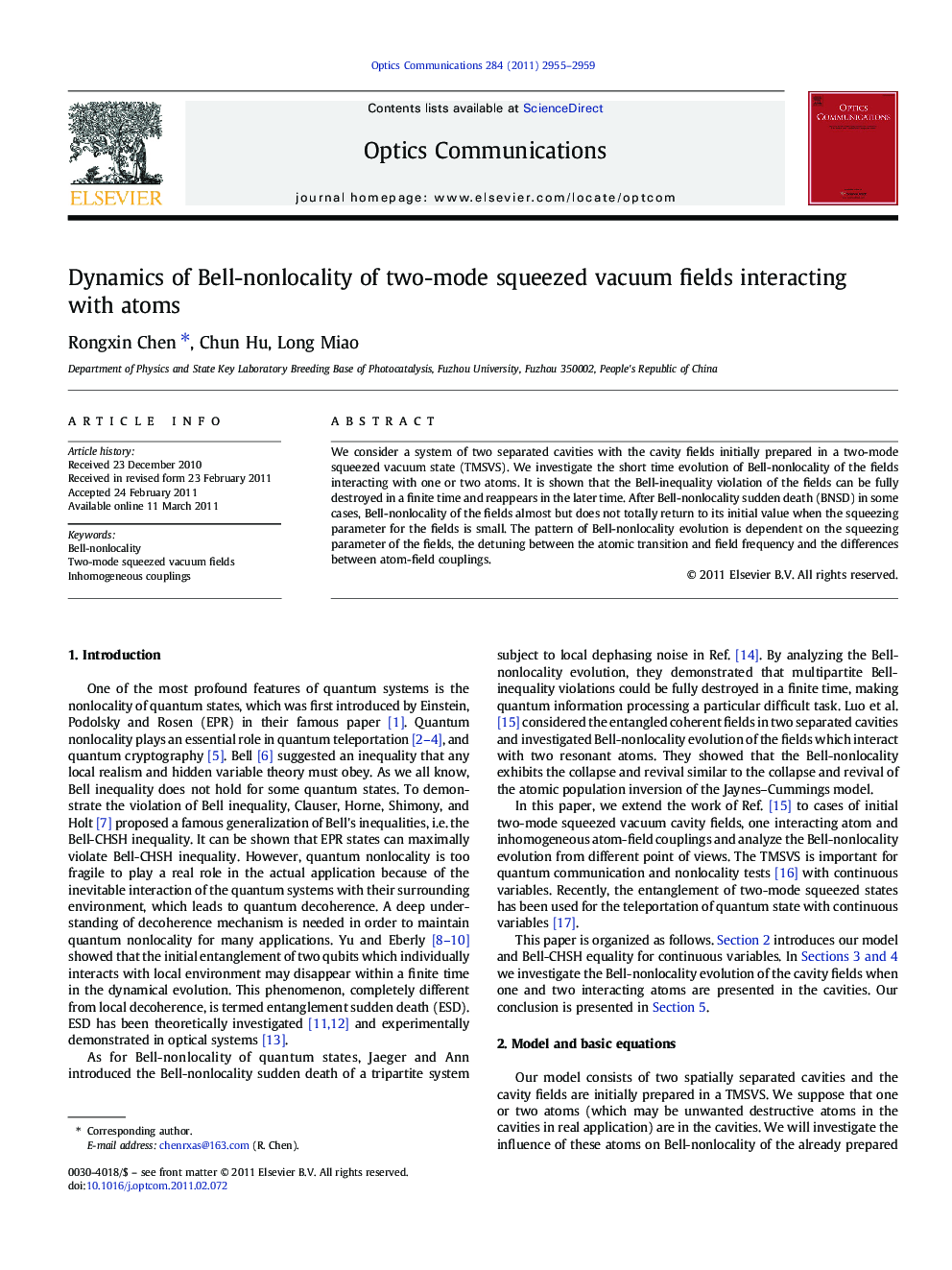| Article ID | Journal | Published Year | Pages | File Type |
|---|---|---|---|---|
| 1537472 | Optics Communications | 2011 | 5 Pages |
We consider a system of two separated cavities with the cavity fields initially prepared in a two-mode squeezed vacuum state (TMSVS). We investigate the short time evolution of Bell-nonlocality of the fields interacting with one or two atoms. It is shown that the Bell-inequality violation of the fields can be fully destroyed in a finite time and reappears in the later time. After Bell-nonlocality sudden death (BNSD) in some cases, Bell-nonlocality of the fields almost but does not totally return to its initial value when the squeezing parameter for the fields is small. The pattern of Bell-nonlocality evolution is dependent on the squeezing parameter of the fields, the detuning between the atomic transition and field frequency and the differences between atom-field couplings.
► We consider a system of two separated cavities. ► Bell-nonlocality of the fields can be fully destroyed in a finite time and reappears. ► In some cases, Bell-nonlocality almost but does not totally return to initial value. ► Evolution pattern depends on atom-field couplings and some system parameters.
